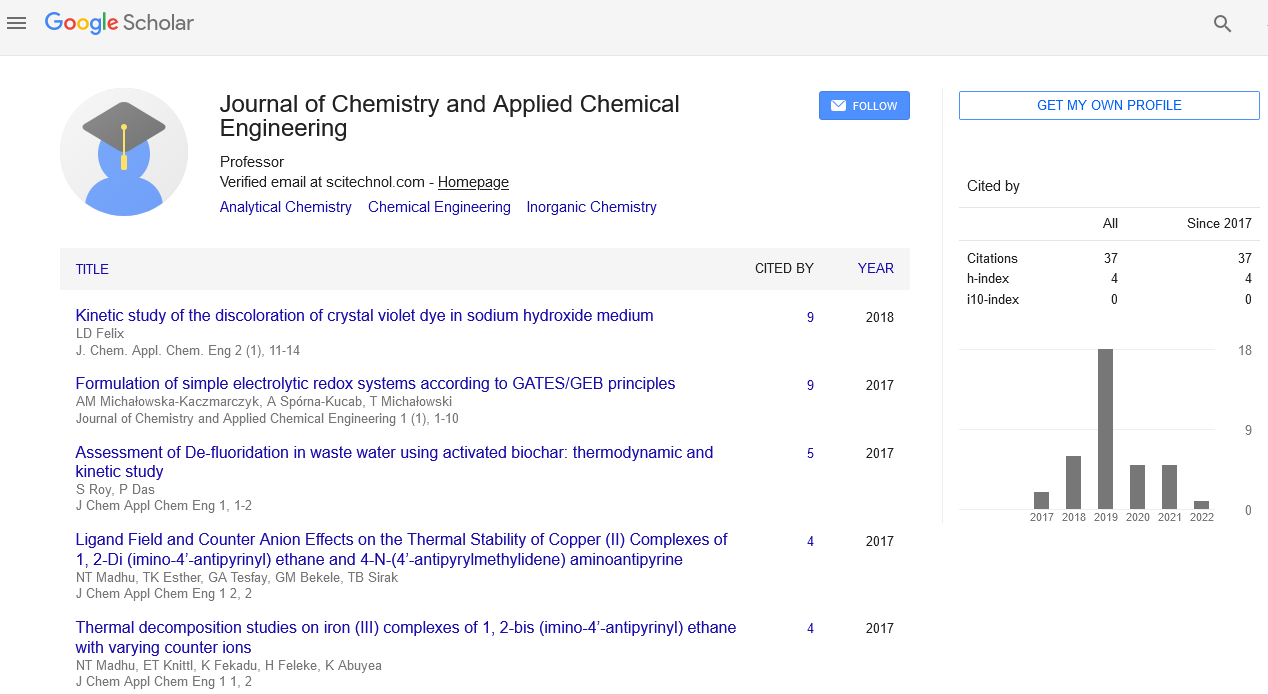Nanostructuration and functionalization of materials and biomaterials
Lidia Benea
University of Galati, Romania
: J Chem Appl Chem Eng
Abstract
Electrochemical methods for the preparation of highquality nanostructured surfaces and functionalization through active biomolecules electrodeposition are highlighted in this work. There are two applied electrochemical methods in our laboratoriesinorder to obtain hybrid and nanocomposite structured layers or advanced functionalzation of material surfaces: (i) direct electrochemical synthesis by electrocodeposition process and (ii) anodization of materials to controlled growth of nanoporous oxide films The second method could be followed by electrodeposition of hydroxyapatite or organic compounds into porous films to form more complex hybrid layers. The main goal of the present paper is to make a summary on results obtained from applying electrochemical surface modification techniques in obtaining advanced functional surfaces and their properties characterization in terms of surface morphology and structure (SEM-EDX, XRD), the roughness and thickness, corrosion, tribocorrosion as well as the mechanical properties as nanohardness or wear resistance. Electrodeposition and the combination of electrodeposition with other electrochemical processes as controlled oxide growth by anodization can lead to a large class of hybrid layers and composite coatings or nanostructured layers (films) on different support materials and structures necessary for a future based on nanotechnology and nanomaterials to improve the surface functionalization of materials face of aggressive environments and degradation processes. Improving surface properties for corrosion and tribocorrosion of materials in specific environments give more valuable industrial and biomedical applications by increasing their life cycle.
Biography
E-mail: Lidia.Benea@ugal.ro
 Spanish
Spanish  Chinese
Chinese  Russian
Russian  German
German  French
French  Japanese
Japanese  Portuguese
Portuguese  Hindi
Hindi 